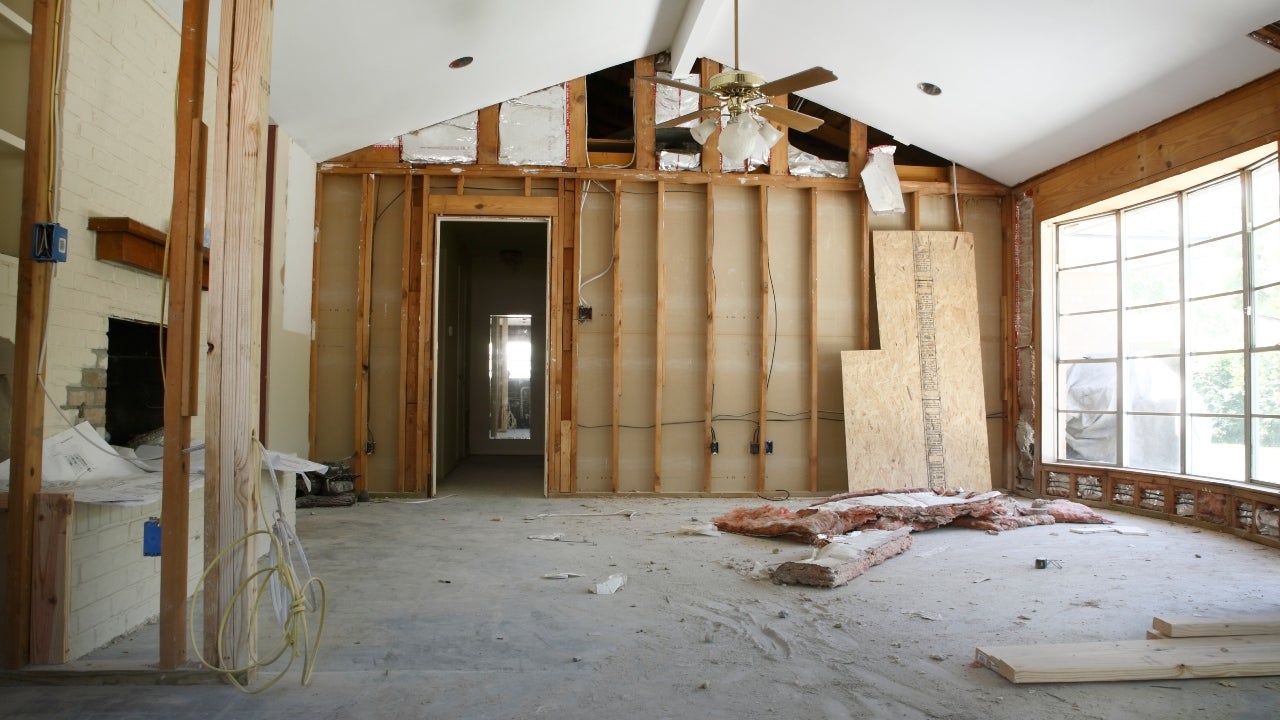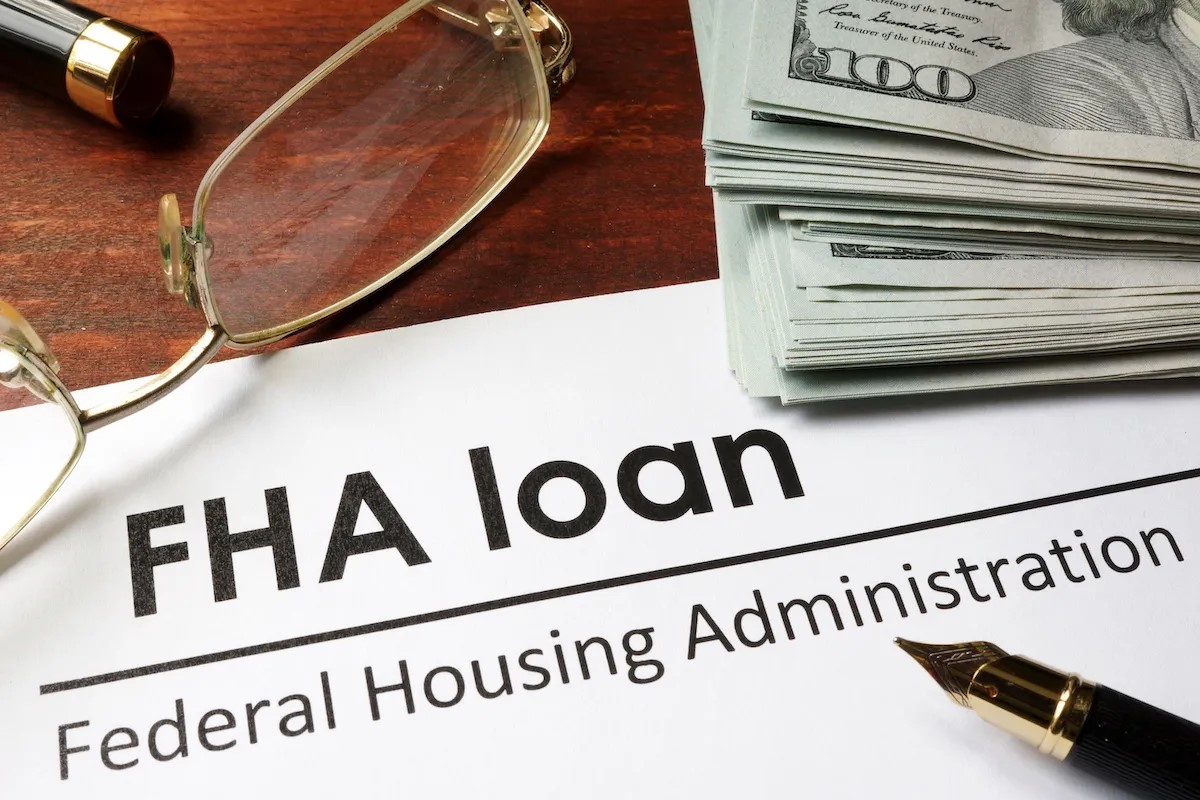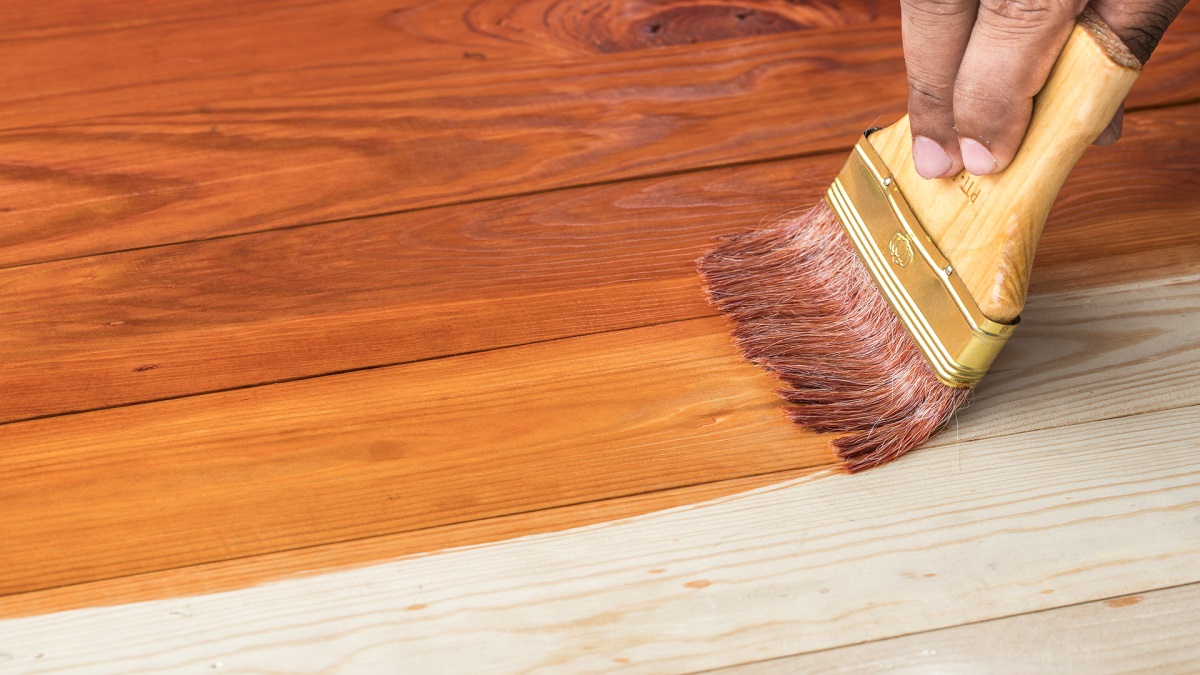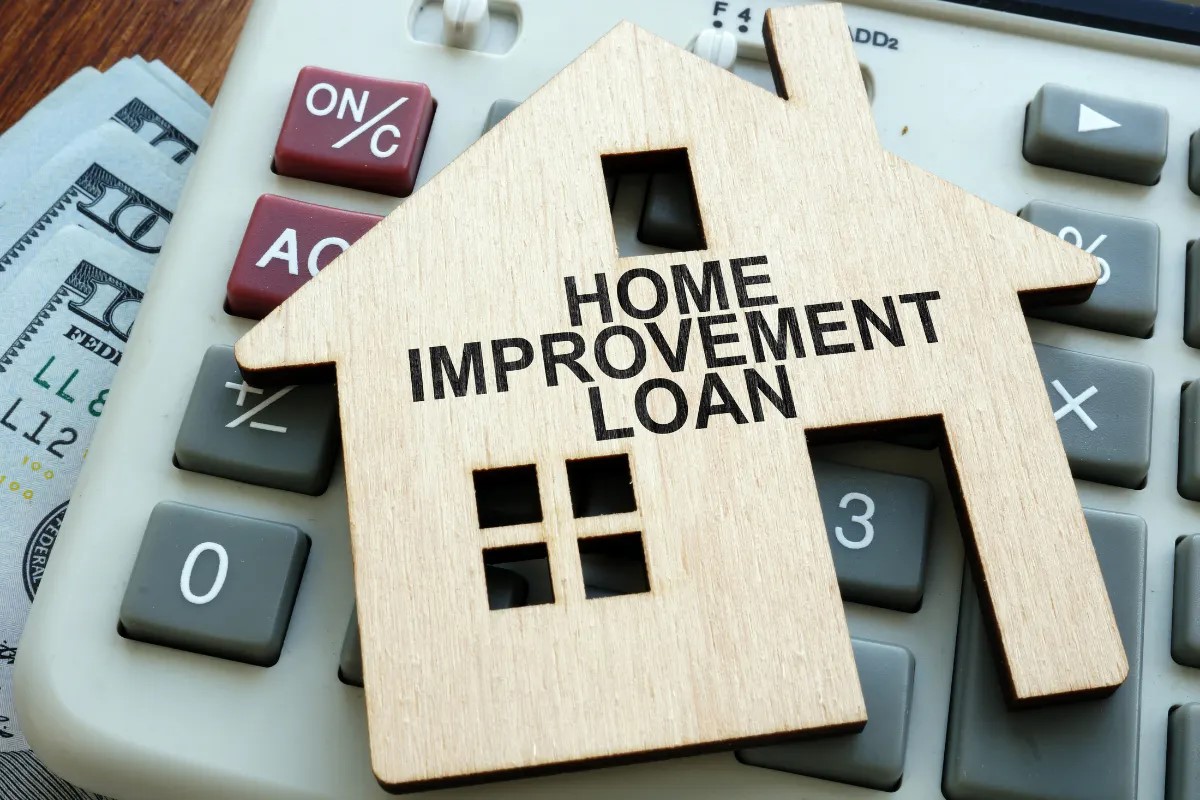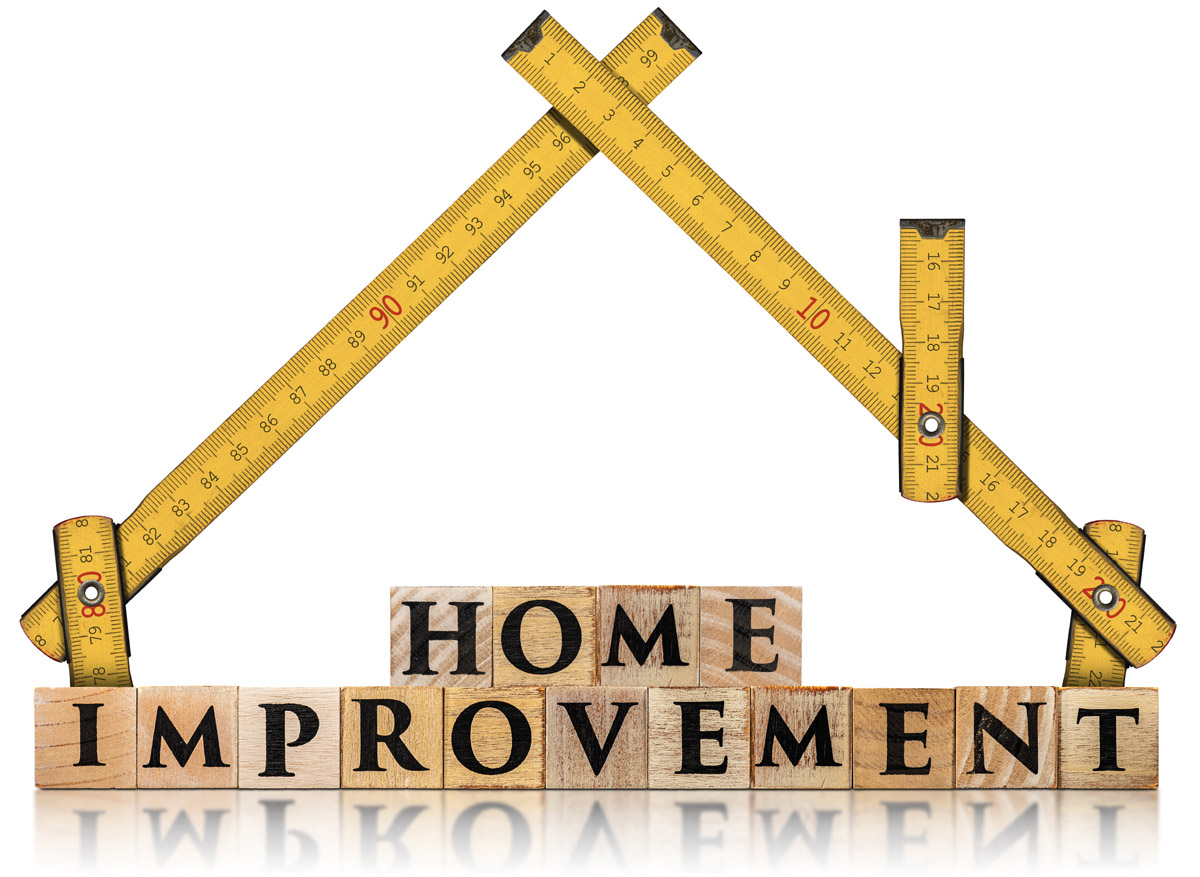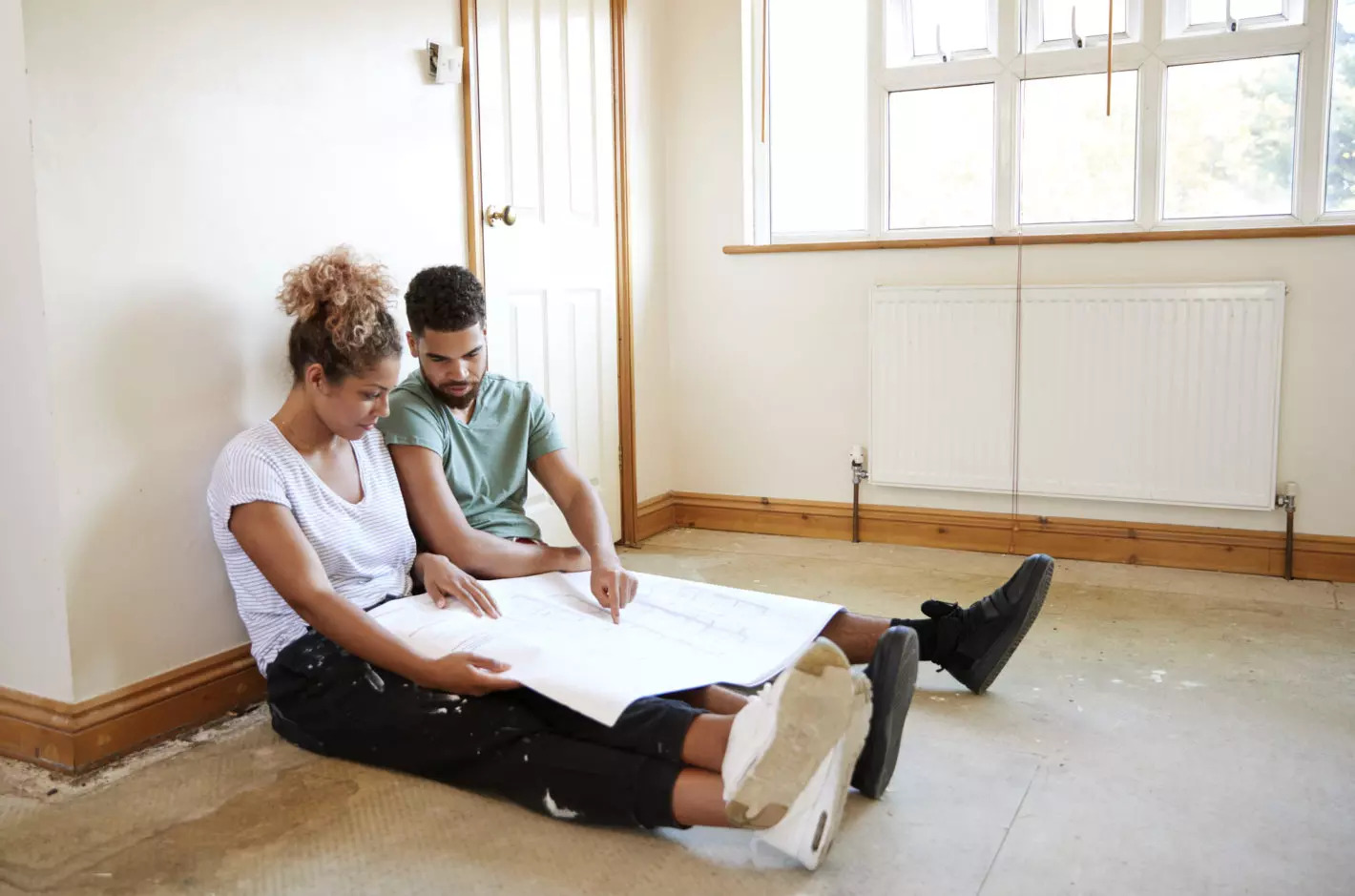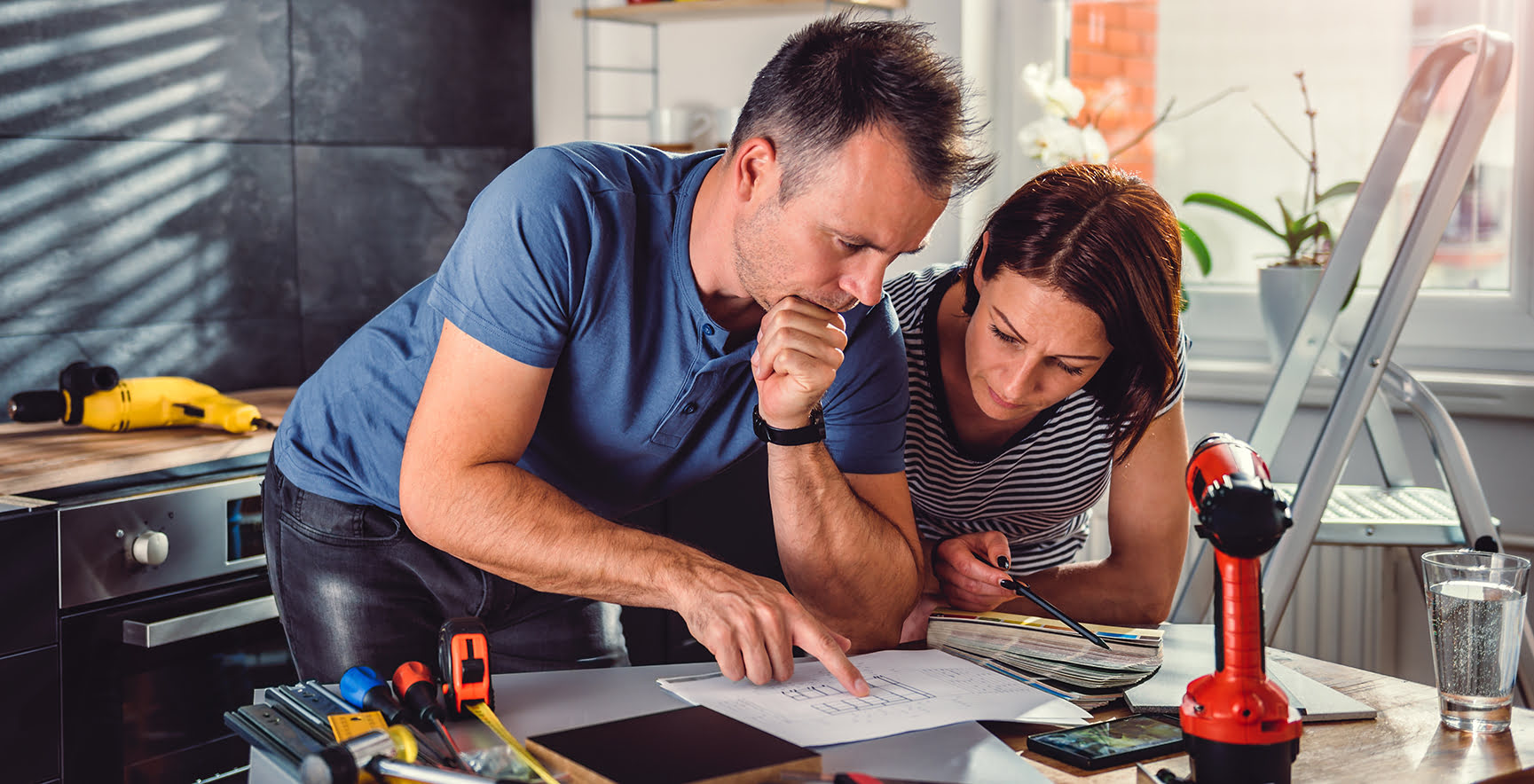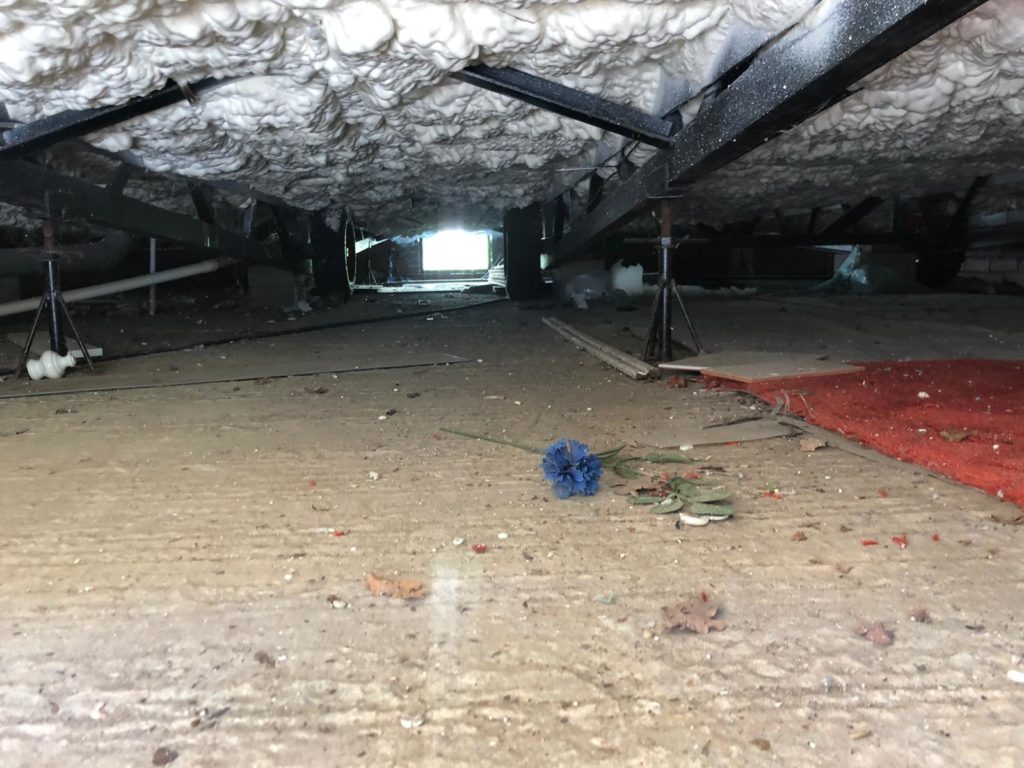Home>Home Maintenance>How To Apply For A Mobile Home Repair Loan
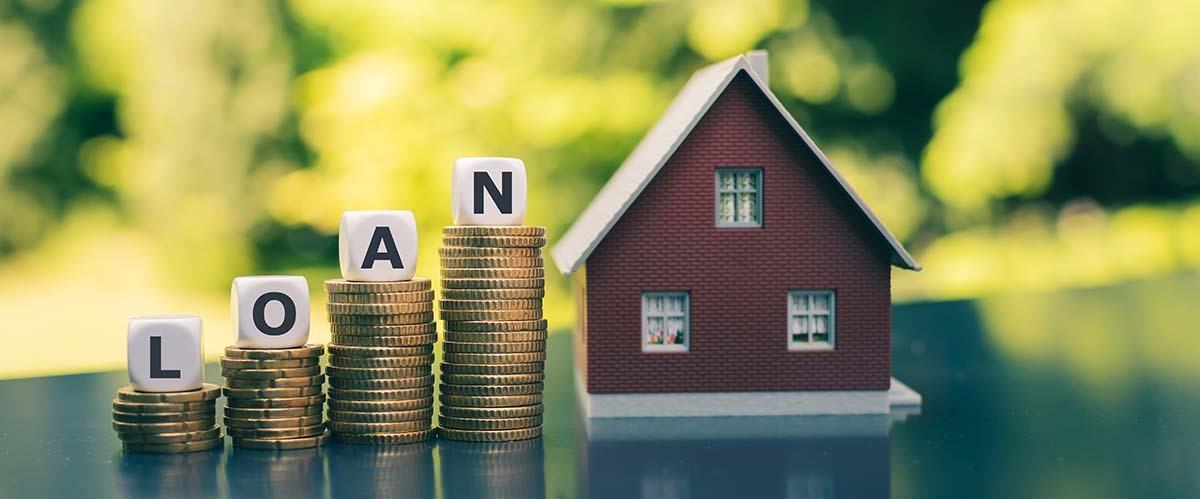

Home Maintenance
How To Apply For A Mobile Home Repair Loan
Modified: March 6, 2024
Looking to fund your mobile home repairs? Learn how to apply for a home maintenance loan and get the funds you need to fix your mobile home.
(Many of the links in this article redirect to a specific reviewed product. Your purchase of these products through affiliate links helps to generate commission for Storables.com, at no extra cost. Learn more)
Introduction
Welcome to our comprehensive guide on how to apply for a mobile home repair loan. Owning a mobile home brings many perks, such as flexibility, affordability, and the ability to change your living location with ease. However, like any other type of dwelling, mobile homes require maintenance and repairs over time. Whether it’s fixing a leaky roof, updating electrical systems, or renovating the interior, home maintenance is essential to preserving the value and comfort of your mobile home.
Unfortunately, unexpected repair costs can quickly add up and strain your finances. This is where a mobile home repair loan can be a lifesaver. These loans provide homeowners with the necessary funds to cover repair expenses without depleting their savings or disrupting their budget. In this guide, we will walk you through the steps of applying for a mobile home repair loan, ensuring that you have the knowledge and resources needed to navigate the process successfully.
Before diving into the application process, it’s important to note that eligibility requirements and loan programs may vary depending on the lender and your location. However, we will provide you with a general overview of the steps involved, giving you a solid foundation to begin your loan application journey.
So, if you’re ready to secure the funds needed to repair and maintain your mobile home, let’s get started with the eligibility and requirements.
Key Takeaways:
- Secure a mobile home repair loan by meeting ownership, credit score, income, and collateral requirements. Research various loan programs to find the best fit for your needs and gather necessary documentation for the application process.
- After obtaining loan approval, carefully plan and execute your mobile home repair project. Repay the loan responsibly by reviewing terms, setting up automatic payments, and tracking your progress to maintain a positive financial standing.
Eligibility and Requirements
Before applying for a mobile home repair loan, it’s crucial to understand the eligibility criteria and requirements set by lenders. While specific requirements may vary, here are some common factors to consider:
- Ownership: You must be the legal owner of the mobile home in order to qualify for a repair loan. Proof of ownership, such as a title or registration, will likely be required during the application process.
- Credit Score: Lenders typically consider your credit history and score when evaluating loan applications. A higher credit score increases your chances of loan approval and may result in more favorable loan terms. However, some lenders may offer loans to individuals with lower credit scores, albeit with higher interest rates.
- Income and Employment: Demonstrating a stable income and employment history can greatly impact your eligibility for a mobile home repair loan. Lenders want assurance that you have the financial means to repay the loan amount. Providing recent pay stubs, tax returns, or other proof of income can strengthen your application.
- Debt-to-Income Ratio: Lenders assess your debt-to-income ratio, which measures the percentage of your monthly income that goes towards debt payments. A lower ratio indicates a stronger financial position, increasing your chances of loan approval.
- Collateral: Depending on the loan program and lender, you may need to offer collateral to secure the loan. This collateral can be in the form of the mobile home itself or other valuable assets.
Aside from these eligibility factors, lenders may also have additional requirements, such as a minimum age limit and a valid government-issued ID. It’s important to review the specific requirements of each lender before submitting your application.
Now that you have a clear understanding of the eligibility criteria and requirements, the next step is to research the available loan programs. This will help you find the best loan option that suits your specific needs and financial situation.
Research Available Loan Programs
When it comes to mobile home repair loans, it’s essential to explore different loan programs and lenders to find the best fit for your needs. Here are a few key loan programs to consider:
- Government-Sponsored Loans: Various government agencies, such as the Federal Housing Administration (FHA) and the Department of Housing and Urban Development (HUD), offer loan programs specifically designed for mobile home repairs. These programs often have flexible eligibility requirements and competitive interest rates.
- Banks and Credit Unions: Traditional financial institutions like banks and credit unions may offer personal loans or home improvement loans that can be used for mobile home repairs. It’s worth researching their terms and requirements and comparing them with other loan programs.
- Online Lenders: Online lenders have become a popular option for borrowers due to their convenience and quick application processes. These lenders often have a variety of loan options available, including personal loans or home improvement loans, which can be used for mobile home repairs.
- Manufacturer-Sponsored Loans: Some mobile home manufacturers offer financing options specifically tailored for repairs and renovations. These loans can sometimes come with special benefits or discounts for purchasing materials or hiring contractors associated with the manufacturer.
- Local or State Programs: Depending on your location, there may be local or state-sponsored loan programs that assist homeowners with mobile home repairs. These programs can offer low-interest loans or even grants. Researching local government resources can help you identify potential options.
Each loan program will have its own set of requirements, terms, and interest rates, so it’s important to carefully evaluate each option. Compare the interest rates, repayment terms, fees, and any other factors that can influence your overall borrowing experience.
In addition to researching available loan programs, it’s also a good idea to reach out to lenders directly and ask questions. Get clarification on any terms or requirements that you may not fully understand. This will help you make an informed decision and choose the loan program that aligns with your financial goals.
Once you have identified a few potential loan programs, it’s time to gather the necessary documentation to support your loan application.
Gather Necessary Documentation
Before applying for a mobile home repair loan, it’s crucial to gather all the necessary documentation to support your loan application. Having these documents ready will streamline the application process and increase your chances of approval. While specific requirements may vary depending on the lender, here are some common documents you may need:
- Proof of Ownership: You will likely need to provide documentation that proves you are the legal owner of the mobile home. This can include a title, registration, or any other official document that establishes your ownership.
- Income Verification: Lenders want assurance that you have the financial means to repay the loan. To verify your income, you may need to provide recent pay stubs, W-2 forms, or tax returns. If you are self-employed, bank statements and profit/loss statements can help substantiate your income.
- Identification: To verify your identity, you will need a valid government-issued ID, such as a driver’s license or passport.
- Proof of Residence: Lenders may require proof of your current residence. This can be in the form of a utility bill or lease agreement that clearly states your name and address.
- Credit History: Lenders will assess your creditworthiness by reviewing your credit history. Be prepared to provide your credit report or information about any outstanding loans or credit card balances.
- Mobile Home Information: It’s essential to provide details about your mobile home, such as the year, make, model, and dimensions. Documentation related to the home’s condition, such as inspection reports or repair estimates, may also be required.
- Insurance Information: Some lenders may require proof of insurance coverage for your mobile home. Have your insurance policy details ready, including the insurance provider’s name and contact information.
It is important to note that these are general documents that lenders commonly ask for. However, specific lenders may have additional requirements, so it’s best to check with them directly to ensure you have all the necessary documentation prepared.
Now that you have gathered the necessary documentation, it’s time to complete the loan application. We will walk you through this process in the next section.
Complete Loan Application
Once you have gathered all the necessary documentation, it’s time to complete the loan application. The application process may vary depending on the lender, but here are some general steps to follow:
- Choose a Lender: Based on your research and the loan programs available, select a lender that best suits your needs. Consider factors such as interest rates, repayment terms, and customer reviews.
- Visit the Lender’s Website: Most lenders allow you to apply for a loan online. Visit the lender’s website and locate their loan application page.
- Start the Application: Begin the loan application by providing your personal information, such as your name, address, and contact details. Be sure to double-check the accuracy of the information you provide.
- Provide Financial Information: The application will likely require you to provide financial information, including your income, employment details, and any existing debts or liabilities.
- Submit Documentation: Upload or mail the necessary documentation to support your loan application. This may include proof of ownership, income verification, identification, insurance information, and any other documents requested by the lender.
- Review and Confirm: Carefully review all the information you have provided in the application to ensure its accuracy. Once you are satisfied, submit the application.
- Pay Application Fees: Some lenders may require an application fee to process your loan application. Be prepared to make the necessary payment if applicable.
During the application process, it’s important to read and understand all the terms and conditions before submitting your application. Take note of any fees, interest rates, and repayment terms to ensure you are comfortable with the loan terms.
After submitting your loan application, the next step is to wait for loan approval.
When applying for a mobile home repair loan, gather all necessary documentation such as income verification, proof of ownership, and estimates for repairs to streamline the application process.
Read more: How To Apply For A USDA Construction Loan
Submit Application and Documentation
Once you have completed the loan application and gathered all the necessary documentation, it’s time to submit everything to the lender. Here are the steps to follow:
- Review the Application: Before submitting, carefully review your loan application to ensure all the information is accurate and complete. Double-check that you have included all the required documentation as well.
- Submit Online: If you are applying online, follow the instructions provided by the lender to submit your application and upload the required documents. Ensure that all documents are clear and legible.
- Submit in-person or by mail: If the lender requires physical copies of the application and documents, you may need to submit them in-person at a branch location or send them by mail. Make sure to take note of the correct mailing address or branch location.
- Keep Copies: Regardless of the submission method, it’s advisable to keep copies of all the documents you submit. This will serve as a reference in case any issues arise during the loan approval process.
- Confirm Receipt: If you submit your application and documents online, you may receive an acknowledgment or confirmation email from the lender indicating that they have received your application. If submitting in-person or by mail, consider following up with the lender to confirm receipt.
It’s important to note that the loan approval process may take some time. Lenders need to review your application, verify the documentation, and assess your eligibility. Be patient and prepared to wait while the lender processes your application.
Once your application is approved, you can move on to the next step: beginning the repair project.
Await Loan Approval
After submitting your loan application and all the necessary documentation, the next step is to await loan approval from the lender. The loan approval process can take some time as the lender reviews your application, verifies your information, and assesses your eligibility. Here are some important points to keep in mind while awaiting loan approval:
- Be patient: Loan approval can take a few days to a few weeks, depending on the lender and the complexity of your application. Avoid unnecessary stress and have patience during this waiting period.
- Stay in contact: If you haven’t received any communication from the lender after a reasonable period, consider reaching out to inquire about the status of your application. You can contact them by phone, email, or any other preferred method of communication specified by the lender.
- Respond promptly: It’s possible that the lender may request additional information or documentation during the review process. Make sure to respond promptly to any such requests to expedite the approval process.
- Check your email and mail: Keep an eye on your email inbox and physical mailbox for any correspondence from the lender. They may send updates, requests for further information, or the final loan approval decision through these channels.
- Consider alternative options: While waiting for loan approval, it’s a good idea to explore alternative financing options or backup plans in case your application is not approved. This can include seeking assistance from family and friends, exploring other loan programs, or considering a different repair financing strategy.
- Review the loan terms: If your loan application is approved, carefully review the terms and conditions provided by the lender. Pay close attention to the interest rate, repayment period, monthly installments, and any other fees or charges associated with the loan. Ensure that you fully understand and are comfortable with these terms before proceeding.
Remember to manage your expectations during the loan approval process. While you may be eager to begin your mobile home repair project, it’s important to allow the lender sufficient time to assess your application thoroughly. Once your loan application is approved, you can move forward with the repair project you’ve been waiting for.
Begin Repair Project
Congratulations on receiving loan approval for your mobile home repair project! Now that you have the necessary funds, it’s time to kick-start the repair project. Here are some important steps to consider as you begin:
- Create a plan: Outline the scope of the repair project and create a detailed plan. Identify the specific repairs or renovations you will be undertaking and establish a timeline for completion. This will help you stay organized and ensure that the project progresses smoothly.
- Hire reputable contractors: If you need professional assistance with the repairs, take the time to research and hire reputable contractors who specialize in mobile home repairs. Obtain multiple quotes and compare their services and pricing before making a final decision. Verify their credentials, licenses, and insurance coverage to ensure they are qualified for the job.
- Order necessary materials: Determine the materials you need for the repairs and place orders accordingly. Take measurements accurately and factor in any specific requirements for mobile home repairs. Consider purchasing materials in bulk to save costs, especially if you have multiple repairs planned.
- Monitor the progress: Stay involved in the repair project by monitoring the progress on a regular basis. Coordinate with the contractors, communicate any changes or concerns, and ensure that the project is on track. Being actively engaged in the project will help you address any issues promptly and ensure the repairs are executed to your satisfaction.
- Maintain open communication: Maintain open and clear communication with the contractors, suppliers, and any other parties involved in the repair project. Regularly communicate updates, address any questions or concerns, and ensure that everyone involved is on the same page.
- Document and keep records: Keep a record of all the repair project’s documents, including contracts, invoices, permits, and warranties. This documentation will be helpful for future reference, insurance purposes, or potential resale of your mobile home. It also serves as a record of the repairs you have made.
- Ensure safety: Prioritize safety throughout the repair process. Adhere to applicable safety guidelines and regulations, and ensure that the contractors follow proper safety protocols. This will protect both you and the contractors working on your mobile home.
- Stay within budget: Keep track of your expenses to ensure that you stay within your allocated budget. Regularly review your expenditures and adjust your plans if needed to stay on track financially.
By following these steps and staying proactive in managing your repair project, you will increase the likelihood of a successful outcome. Remember to communicate openly, make necessary adjustments to the plan when required, and maintain a positive working relationship with the contractors involved.
Once the repair project is completed, it’s time to enjoy the improved comfort and functionality of your mobile home.
Repay the Loan
Now that your mobile home repair project is complete and your home is in great shape, it’s time to focus on repaying the loan you obtained. Repaying the loan promptly and responsibly will help you maintain a good financial standing and ensure a positive borrowing experience in the future. Here are some steps to help you effectively repay the loan:
- Review loan terms: Take the time to review the loan terms and understand the repayment schedule, interest rate, and any associated fees. Familiarize yourself with the payment due dates, which will help you plan your finances accordingly.
- Set up automatic payments: To ensure timely loan repayment, consider setting up automatic payments. Many lenders offer this option, allowing you to schedule automatic deductions from your bank account. This not only ensures that payments are made on time but also saves you from the hassle of manual payments.
- Create a repayment budget: Incorporate your loan repayment into your monthly budget. Determine how much you need to allocate for loan payments while still meeting your other financial obligations. Consider cutting back on non-essential expenses if necessary to free up additional funds for repayment.
- Make extra payments: If you have the financial flexibility, consider making extra payments towards your loan. By paying more than the minimum required amount, you can reduce the overall interest paid and shorten the repayment period. Contact your lender to ensure that any extra payments are correctly applied to the loan principal.
- Communicate with your lender: If you face any financial difficulties that may affect your ability to make payments, communicate with your lender promptly. They may be able to work with you to modify the repayment terms or explore alternative options. Ignoring payment issues can have negative consequences, such as late fees and damage to your credit score.
- Track your repayment progress: Keep track of your loan repayment progress to ensure that you are staying on track. Monitor your loan balance and the number of payments remaining, and celebrate your milestones as you get closer to full repayment.
- Pay attention to any changes in loan terms: Stay informed about any changes in loan terms or conditions that may occur during the repayment period. This can include changes in interest rates or repayment terms. Read any communication from the lender carefully and seek clarification if needed.
- Complete the loan repayment: Finally, make your monthly payments diligently until the loan is fully repaid. Stay disciplined and committed to your repayment schedule, and you will be free from the loan obligation in due time.
Remember, repaying your mobile home repair loan on time not only fulfills your financial commitment but also helps to build a positive credit history. This will benefit you in future loan applications and demonstrate your reliability as a borrower.
Congratulations on completing your mobile home repair project and managing your loan repayment effectively. Enjoy your newly repaired home!
Frequently Asked Questions about How To Apply For A Mobile Home Repair Loan
Was this page helpful?
At Storables.com, we guarantee accurate and reliable information. Our content, validated by Expert Board Contributors, is crafted following stringent Editorial Policies. We're committed to providing you with well-researched, expert-backed insights for all your informational needs.
